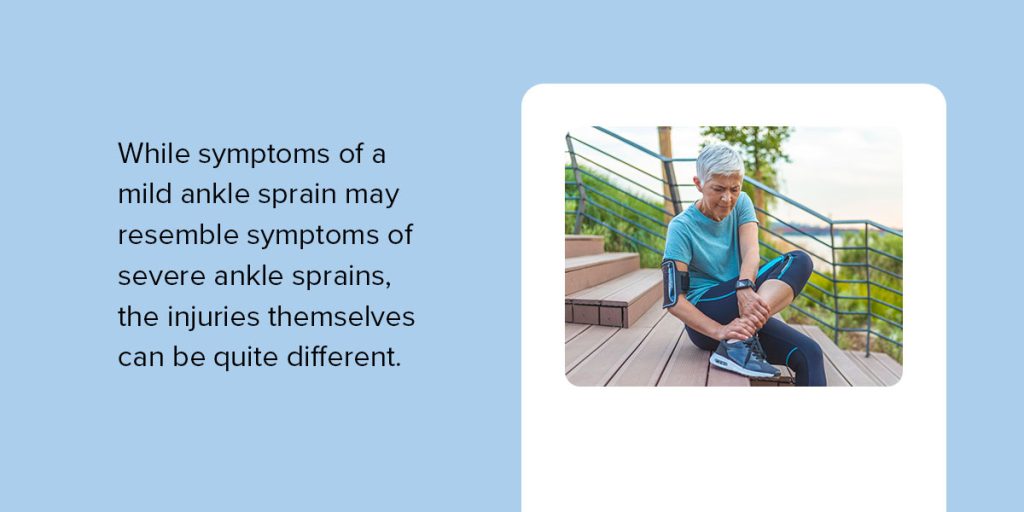
Reviewed by: Amy Hinshaw
You don’t have to be a professional athlete to experience a sprain or strain. Simply walking on uneven pavement and twisting your ankle can leave you with a sprain. Because sprain and strain injuries are so common, it’s important to be able to spot them so you can properly treat them. Review our guide to sprains and strains to learn what these injuries are, the symptoms you can expect and common treatment plans.
Sprains and strains are fairly common injuries. Both are caused by twisting or stretching the body in awkward or unnatural positions, especially during exercise or while playing sports. Failing to stretch your body or moving heavy objects can increase your chances of spraining or straining your body.
Sprains and strains affect different parts of the body. So, what is a sprain? When your ligaments — the bands of tissues connected to your bones — get stretched in the wrong direction or too far, you suffer from a sprain.
A strain also results from overusing, overstretching or moving body parts in the wrong direction. However, strains affect tendons and muscles instead of ligaments. Tendons are the fibrous tissues responsible for connecting your muscles to your bones.
Sprains and strains affect different parts of the body. Because they involve the overstretching or tearing of ligaments, it’s more common to see sprains in areas of the body that are vulnerable during a fall, like wrists and knees.
Common types of sprains include:
Strains can affect any muscles or tendons in the body, but you’re most likely to see strains occur in the following areas:
People who use or work the same muscles on a daily or regular basis, like athletes, are more likely to experience a strain.
While sprains and strains are different injuries, they share many symptoms. The severity and number of symptoms may vary depending on how serious the injury is. However, if you’re experiencing any of the following symptoms, there’s a good chance you are suffering from a sprain or strain. To confirm your diagnosis visit your local urgent care.
General symptoms of sprains and strains include:

Sprains and strains can be different in terms of severity. While symptoms of a mild ankle sprain may resemble symptoms of a severe ankle sprain, the injuries themselves can be quite different. The varying degrees of sprains include:
Similar to sprains, the degrees of strains are also ranked on a scale of mild to severe. Review the different types of strains below:
Severe sprains and strains may require surgery or other special treatment. However, for the more common mild to moderate sprains and strains, it’s recommended you follow a treatment method called PRICE
The recovery time for a sprained ankle depends on your injury’s severity. Recovery time can also vary depending on how well you follow your treatment plan.
For mild to moderate sprained ankles, you can expect your recovery time to be as short as two weeks. However, even once you start to feel better, you’ll need to avoid strenuous activities for up to eight weeks to ensure you fully and properly heal your sprained ankle.
Severe sprains have a longer recovery time. The healing process for severely sprained ankles can last anywhere from 12 weeks to several months. For severe sprains treated by surgery, you can expect your healing process to be on the longer end. Your surgeon will be able to provide you with a more in-depth recovery timeline.
Whether you’re starting a new fitness routine or you’re an experienced athlete, it’s extremely important to properly stretch before jumping into any physical activity. Warming up your body and stretching are great ways to prevent sprains or strains.
If you think you’ve suffered a sprain or strain, find a Coastal Urgent Care near you to receive the proper diagnosis and treatment plan. Get in line, online today so our providers can help set you on the road to recovery.